 These banks of the River Guadalquivir witnessed the most momentous time in history which must probably be the single most crucial juncture in the maritime industry. Ferdinand Magellan is said to have set sail to explore another route for the Spanish to lay their hands on the lucrative spice trade. As it stood at that time, the Muslim rulers tightly controlled the land routes to the East. The river also saw the passage of a colossal amount of 'blood' gold from South America being transport through this port to the Spanish Empire.
These banks of the River Guadalquivir witnessed the most momentous time in history which must probably be the single most crucial juncture in the maritime industry. Ferdinand Magellan is said to have set sail to explore another route for the Spanish to lay their hands on the lucrative spice trade. As it stood at that time, the Muslim rulers tightly controlled the land routes to the East. The river also saw the passage of a colossal amount of 'blood' gold from South America being transport through this port to the Spanish Empire.
By the River Guadalquivir ©FG
 |
| The modern arched bridge over Guadalquivir ©FG |
 |
| Torre del Oro - the watch tower that oversaw entrance of ships to the port. A chain went across the river to block the passage of unauthorised vessels. ©FG |
1929 was an important year for Ibero-Americano cooperation. After 20 years of planning and planned to be held in 1914, only to be delayed by the Great War, colonies decided to show the best that they had to offer, architecture and style wise, for a year from June 1929. Sevilla, being the centre of Latin American exploration, was given the honours to host this fair. Each participating country, including the USA, Portugal and Brazil, built an exhibition place each which was later functioned as their consulate building. The landmark of this expo is the Plaza de España, the picturesque building which showcases the splendour of Renaissance, Moorish and Baroque styles of construction. This beautiful structure may appear familiar as it had been used as the backdrop in many Hollywood blockbusters including 'Lawrence of Arabia' and 'Star Wars'.
 |
| Plaza de España ©FG |
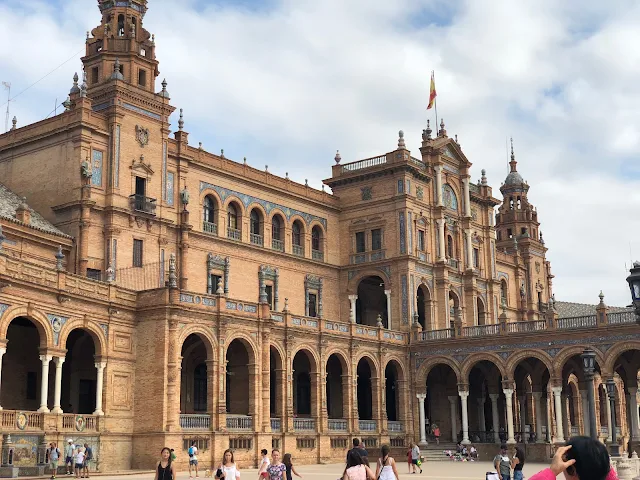 |
| The Pavilion at Plaza de España ©FG |
 |
| The walls at the Plaza are decorated by the coat of arms of each Spanish district ©FG |
The Real Alcázar (Royal Palace) of Sevilla showcases the majestic representations of the greatness Visigoth, Moorish and Gothic architecture. A portion of the palace is still being used by the Spanish royalties for state functions.
 |
©FG
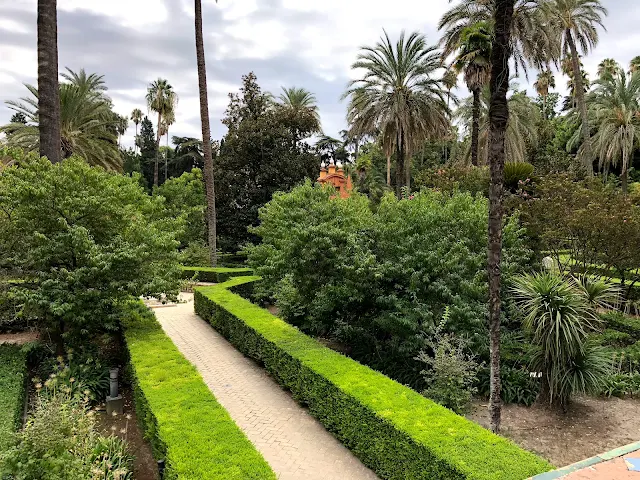 |
| Garden fit for a King, boasting of tropical and Oriental variety too. ©FG |
|
 |
| The Star of David is evidence that the Jewish community is represented in this palatial area too. ©FG |
 |
| Hall of Ambassadors at the Alcázar of Seville. Imagine how this dome, at the heights of the Almonad Sultanate, would appear to the waiting diplomat. The grooves between the frame of the dome which used to be filled with pieces of mirror must have been scintillating to the visitor, adding grandeur to the grand structure. It is supposed to give the illusion of viewing into a star-lit night sky. ©FG |
 |
| Eyecatching patterns ©FG |
 |
Something for everyone in the pillars. One of the favourite pastime of the little tots of the royal courtyard to pick out the hidden doll carvings in the cast. Much like how children in the 1990s used to identify 'hidden Mickeys'. ©FG
|
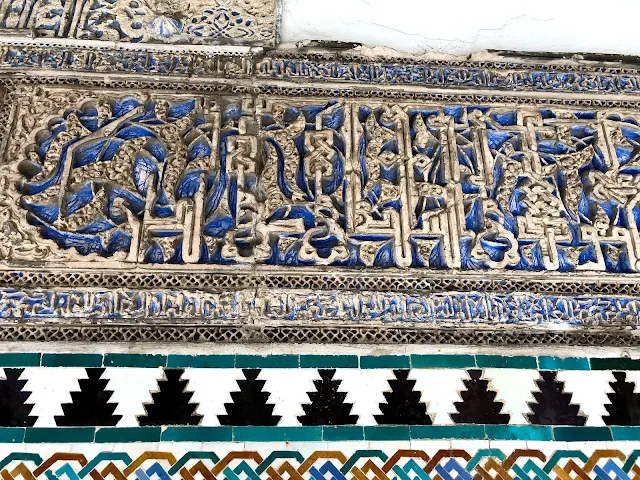 |
| The infusion of Islamic scripture to remind everyone that above all Allah is the mightiest. Apparently, some of the Arabic inscriptions also glorify Christian rulers. ©FG |
 |
| The Courtyard of the maidens of Alcázar. ©FG |
 |
| ©FG |
 |
| The coveted Seville Cathedral ©FG |
Interior of Seville Cathedral ©FG
 |
| Bullfight ring - Seville ©FG |
 |
| A typical Spanish square. A cosy place for Sangria, tapas, idle chat, people watching and followed by an afternoon siesta. Life... ©FG |
 |
| The Kissing Alley - private ownership promoted uncoordinated extensins of buildings. It is, however, convenient for potential and wannabe Romeos and Juliets for their amorous activities. ©FG |
 |
| Souvenir from Sevilla. The characteristic broken marble ceramic from Andalusia. It is said this type of design is Visigoth in origin, not Islamic or Arabic. ©FG |
 |
| Sevilla is said to be the birthplace of the Flamenco dance. The Roma (formerly referred to as gipsies) folks, who occupied the fringes of the burgeoning of Andalusian society, used to bury their sorrows and their trepidations of life in music and dance. Triana, at the banks of Guadalquivir, with its sojourners and their bohemian lifestyle is sort of a musical hub of the town. |
 |
No religion can claim to have won heart without conquest, blood, tears and human sacrifice. Conversions by force, coercion, intimidation and fear of death but everyone claims that their religion promotes peace. More lives are lost through religion than diseases and natural calamities combined. Still, religion is relevant, they say, at any time of human civilisation. ©FG
|
 These banks of the River Guadalquivir witnessed the most momentous time in history which must probably be the single most crucial juncture in the maritime industry. Ferdinand Magellan is said to have set sail to explore another route for the Spanish to lay their hands on the lucrative spice trade. As it stood at that time, the Muslim rulers tightly controlled the land routes to the East. The river also saw the passage of a colossal amount of 'blood' gold from South America being transport through this port to the Spanish Empire.
These banks of the River Guadalquivir witnessed the most momentous time in history which must probably be the single most crucial juncture in the maritime industry. Ferdinand Magellan is said to have set sail to explore another route for the Spanish to lay their hands on the lucrative spice trade. As it stood at that time, the Muslim rulers tightly controlled the land routes to the East. The river also saw the passage of a colossal amount of 'blood' gold from South America being transport through this port to the Spanish Empire.






























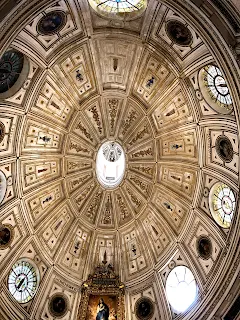
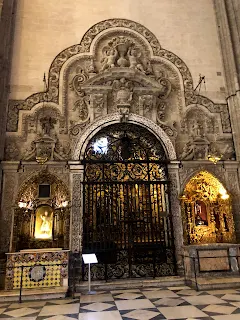






No comments:
Post a Comment